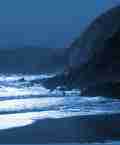 |
Search the site:

|
SOME VIEWS OF THE CLERGY
The following is a brief look at the relationship between the clergy and Irish dance and some of the views expressed by them in recent centuries. In 1670 a priest in West Cork in the south of Ireland wrote: 'Women dancers are the cause of many evils, because it is they who bear arms in the devil's army. The devil compels them to gather on holidays for dancing, a thing which leads them to bad thoughts and evil actions.' Dr Plunket, Catholic Bishop of Meath, in his sermon at Drumonrath in July 1790, condemned the promiscuous assembly of both sexes on Sundays for the purpose of dancing. Father John Casey (1769-1861), parish priest in Ferriter, County Kerry, was a deadly enemy of music, dancing and pipe playing. He forbade pipers to play for dancers even though this was their sole source of income - without this, pipers were sentenced to a life of destitution and many died in the poor house. On another occasion Father Casey, finding a piper playing for dancers, kicked, cuffed and beat him unmercifully, breaking his pipes. The locals had to make a collection for the piper. Waltzes and polkas were singled out by Pope Pius IX in 1864 as both these dances involved constant physical contact between couples and because they were fairly lively, with dancers seeming to enjoy themselves. As we all know, everything was fine with the Church as long as you did not take pleasure from it. In 1875 the bishops of Ireland issued a pastoral address in which they denounced the improper dances which had been imported from abroad, clearly an occasion of sin. In 1919 a piper called Ruane, in Teach an Gheta, having been told that the priest for no apparent reason had banned any further music, burst out crying, turned on his heel and went home. Ruane never came to another Sunday there - nor did any other piper. The Archbishop of Dublin warned in 1923 that 'Dancing had become a grave danger to the morals of young people.' click here for part 2.
From the Appletree Press title: The Complete Guide To Irish Dance.
|
[ Back to Top ]
All Material © 1999-2004 Irelandseye.com and contributors
